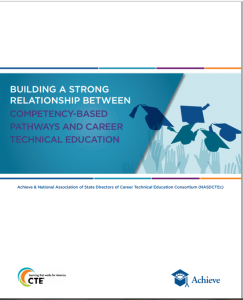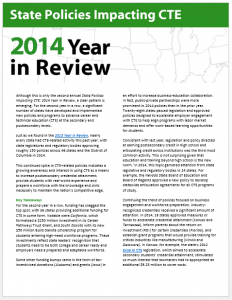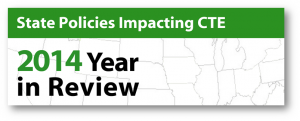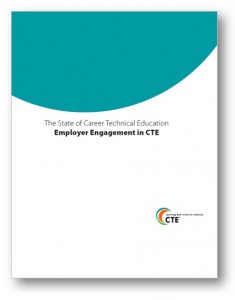Setting a Statewide Vision for Work-based Learning 
In recent years, work-based learning has been garnering much attention at the national, state and local levels as an effective strategy for connecting students’ classroom learning to their career interests.
In a new series, “Connecting the Classroom to Careers: The State’s Role in Expanding Work-based Learning,” NASDCTEc explores the important role for states in expanding high-quality work-based learning opportunities for all students, with a particular focus on untangling the major barriers at the K-12 level.
Today, we are releasing our first installment in this series, “Setting a Statewide Vision for Work-based Learning,” with key questions and resources for policymakers and a closer look at how one state used a progressive, skills-based vision to overhaul work-based learning.
NASDCTEc State Policy Tools Updated
On careertech.org, we offer state policy resources that help demonstrate what CTE looks like across the country. We have recently updated some of these resources, including our state-specific snapshots and state web profiles.
State Snapshots
Our newly revamped State Snapshots are great resources to help illustrate what CTE looks like in your state, and are designed to be great printable “leave-behind” documents when making the case for CTE. The snapshots use state and national data to show how CTE works for students, the economy and the nation.
You can find your state’s snapshots here. While you’re there, be sure to check out NASDCTEc’s entire suite of fact sheets and case-making materials designed to help explain CTE’s most important issues including student achievement, programs of study and the skills gap.
State Web Profiles
We have also provided some new updates to the CTE in Your State tool, which provides data and information about CTE in each state. Our newest round of updates includes the most recent secondary and postsecondary enrollment, institutional and performance data from the U.S. Department of Education. We’ve also added a section to explain how CTE is delivered in each state. As a special feature of NASDCTEc members, you can compare multiple states to see trends.
Andrea Zimmermann, State Policy Associate





